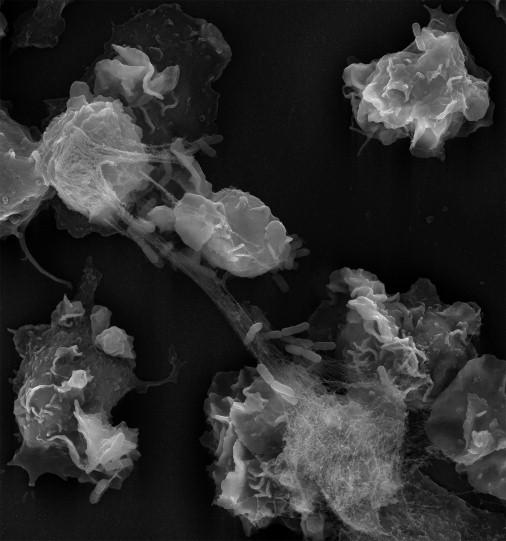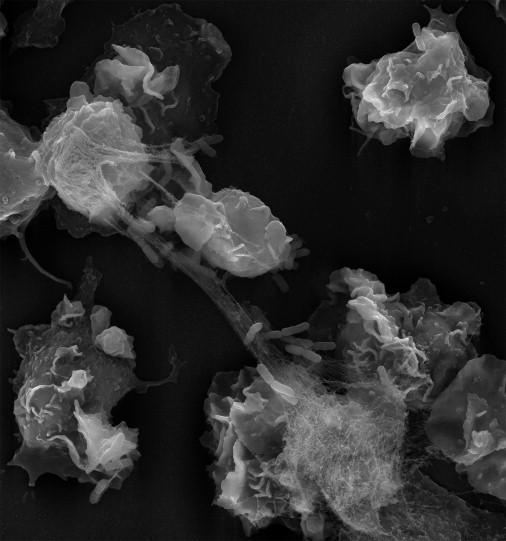
Credit: Volker Brinkmann
In your bloodstream, there are immune cells called neutrophils that, when faced with a pathogenic threat, will expel their DNA like a net to contain it. These DNA snares are called neutrophil extracellular traps or NETs. Researchers from Germany and the United States describe an important step in how these NETs are released and how they stop a fungus from establishing an infection in mice and human cells in the journal Developmental Cell.
"This is basically a type of beneficial cell suicide," says first author Borko Amulic, a postdoc in the lab of Arturo Zychlinsky at the Max Planck Institute for Infection Biology and a newly appointed Lecturer at the University of Bristol. "When neutrophils get overwhelmed, when they can no longer deal with a microbial threat by just engulfing it, that's when the NETs are released."
Once a neutrophil is forced induced to release its NETs, it anchors itself in the tissue and breaks down its nuclear envelope: the barrier between the nuclear DNA and the rest of the cell. The researchers were intrigued by this because, normally, cells only break down their nuclear envelope before they divide. Zychlinsky, Amulic, and colleagues hypothesized that neutrophils were using the same cell cycle proteins used for cell division to release the NETs.
To test this, the researchers inhibited the cell cycle proteins in mouse neutrophils so that fewer NETs were released and found that mice were no longer able to clear fungal infections. Then, they observed human brains with fungal infections and confirmed that our neutrophils are also using cell cycle proteins.
"The ultimate goal for this research is to interfere clinically, either when too few or too many NETs are being produced," says Amulic. "Also, this is just a really fascinating cell biological phenomenon."
###
This work was supported by the Max Planck Society and the European Molecular Biology Organization (EMBO).
Developmental Cell, Amulic et al.: "Cell-Cycle Proteins Control Production of Neutrophil Extracellular Traps" http://www.cell.com/developmental-cell/fulltext/S1534-5807(17)30826-2
Developmental Cell (@Dev_Cell), published by Cell Press, is a bimonthly, cross-disciplinary journal that brings together the fields of cell biology and developmental biology. Articles provide new biological insight of cell proliferation, intracellular targeting, cell polarity, membrane traffic, cell migration, stem cell biology, chromatin regulation and function, differentiation, morphogenesis and biomechanics, and regeneration and cellular homeostasis. Visit: http://www.cell.com/developmental-cell. To receive Cell Press media alerts, contact [email protected]
Media Contact
Cara Cavanaugh
[email protected]
617-335-6270
@CellPressNews
http://www.cellpress.com
Related Journal Article
http://dx.doi.org/10.1016/j.devcel.2017.10.013





